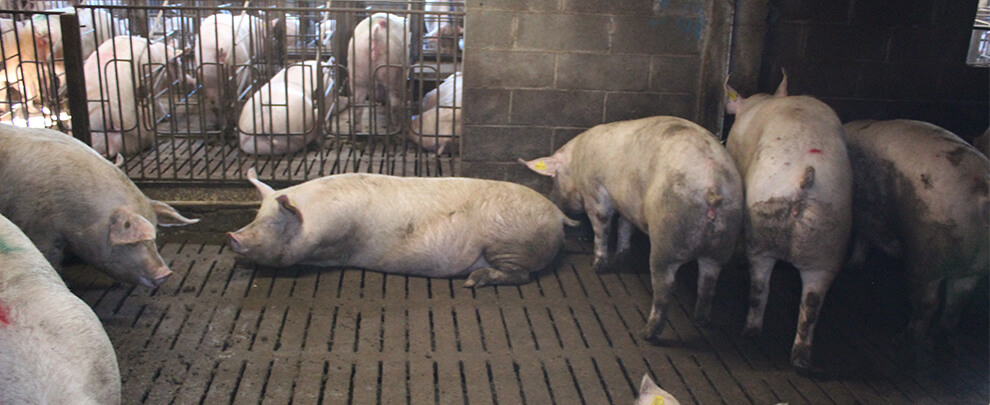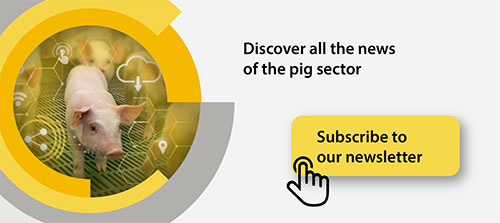Blog
Blog

Strategies for PRRS Control
11th March 2025 - News
Porcine Reproductive and Respiratory Syndrome (PRRS) is one of the most challenging diseases for the swine industry worldwide. Since its emergence in the late 1980s, the genetic variability of the virus has led to the appearance of various emerging and re-emerging strains, making its control and eradication more difficult. Its ability to mutate and recombine not only facilitates its persistence on farms but also allows it to evade acquired immunity, whether through vaccination or previous infection. Given this scenario, farmers must be prepared to face the constant evolution of PRRS with strategies that combine advanced biosecurity, efficient health management, epidemiological monitoring, research on new vaccines, and the development of innovative production management models.
PRRS evolution and its impact on production
Since its first outbreaks, the porcine reproductive and respiratory syndrome virus (PRRS) has changed significantly, giving rise to different versions with varying levels of aggressiveness. In the 1990s, variants emerged that caused the first severe outbreaks in North America. Later, in the 2000s, even more harmful forms of the disease appeared. In recent years, new versions of the virus have spread globally, affecting farms in Europe, America, and Asia. In Europe, the Rosalía variant, detected in Spain in 2020 has shown a strong ability to spread. This strain has been responsible for severe outbreaks, characterized by reproductive failures, severe interstitial pneumonia in piglets, and increased viral shedding, facilitating virus transmission within farms.
The effects of PRRS on pig production are devastating. In pregnant sows, infection causes abortions, premature births, and reduced farrowing rates. In piglets and growing pigs, the virus compromises immune function, making them more susceptible to secondary infections such as bacterial pneumonia. This results in increased mortality, lower weight gain, and reduced feed efficiency. Since PRRS can persist in the body for long periods and transmit subclinically, eradication in infected farms is challenging. Therefore, a comprehensive approach based on multidimensional control strategies is essential.
Strategies for PRRS control
Controlling PRRS requires a combination of measures that reduce virus circulation and minimize its impact on production. Key strategies include:
1. Biosecurity
Biosecurity is the first line of defense against PRRS. Virus transmission can occur through direct contact between infected and susceptible animals, as well as via fomites, aerosols, and mechanical vectors. To reduce virus introduction and spread, strict biosecurity measures must be implemented, such as:
- Access control and movement restrictions for animals, people, and vehicles.
- Installation of air filters in farms located in high-density swine areas.
- Strict cleaning and disinfection protocols for facilities and equipment.
- Animal flow management within the farm to prevent contact between different age groups.
- Risk assessment using quantitative methodologies to measure biosecurity effectiveness.
2. Health management and epidemiological control
Continuous PRRS monitoring on farms is crucial for detecting the virus and preventing its spread. Strategies include:
- Early diagnosis using real-time PCR, ELISA, and genetic sequencing to identify circulating strains.
- Farm closure and opening strategies to reduce virus transmission within pig populations.
- Immune homogenization of the herd through controlled exposures and replacement management strategies.
- Coordination between producers and veterinarians to share epidemiological data and improve decision-making in the industry.
3. Research on pathogenesis and immunology
PRRS remains difficult to control due to the complexity of the host immune response. More investment is needed in studying the virus’s pathogenesis and persistence in infected individuals to develop more effective therapeutic strategies. Additionally, understanding the factors behind the emergence of virulent strains will help anticipate new variants and design more efficient prevention measures.
4. Development of new vaccines
Current vaccines have shown varying effectiveness due to the many variations of the virus that causes PRRS. However, advances in biotechnology are opening up new possibilities to improve pig protection. Some of the most promising areas of research include:
- RNA-based vaccines, which could adapt better to virus changes and provide more specific protection.
- Genetic modification techniques to breed pigs with greater natural resistance to the disease.
- Vaccines using modified viruses to strengthen the immune system without the risk of mixing with existing viruses on farms.
Combining these strategies will help advance the fight against PRRS and improve farm protection.
Future perspectives
PRRS is a global problem that requires a collaborative and multidisciplinary approach. The virus’s evolution will continue to pose challenges, but implementing advanced biosecurity measures, improving diagnostics, and developing innovative vaccines will help reduce its impact on pig production. The key to effective control lies in epidemiological surveillance, investment in technology, and adopting stricter management practices. The industry must continue exploring new strategies and strengthening cooperation among all sector stakeholders to minimize losses and improve disease control in the coming years.








